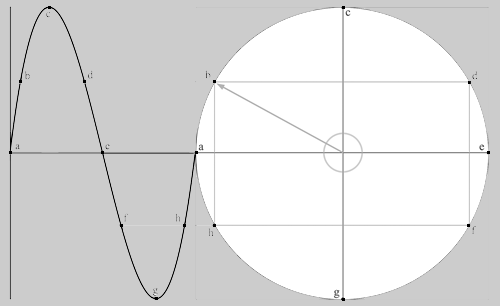
OUTLINE OF MUSIC THEORY
a book by Oscar van Dillen

"The method proposed in this book follows a strategy of maximum depth from the outset. All short-cuts to knowledge are avoided, and hence the reader will find no dogma-like approach, all too common in many music theory teachings (at least in the perception of students). Instead, the very basics are intricately studied, often even almost philosophically, before consecutive steps are presented; and then this procedure of maximum depth is repeated. Great care has been taken to view all subjects from as many points of view as possible, as it is the writer's firm conviction that a truly well-founded personal view is always developed on the basis of at least three prior points of view, like any table needs at least three legs. Music theory has the purpose of serving musicians in enhancing not only their understanding of music, but rather lead to a greater individual freedom with regard to performances in the end as well. With this it should finally help musician's to develop new ideas about the performance of music, and even inspire through the larger awareness provided.
At the end of each section, the reader will find a section with questions. No answers to these are provided in this book, as it is the writer's firm conviction that the quality of the question, and the search, and the quality of the search for an answer, are not only mandatory main ingredients but moreover the very purpose of all learning processes. There can exist no short cuts to knowledge, nor to skill. When in doubt, the student should always consult at least the text of the Outline, in search of an at least correct and possibly even original answer. To some questions, original answers can indeed be given, in the light of the open nature of such questions. In more exact matters there may however be fewer room for originality, and sometimes there may even be just exactly one correct answer. Although a teacher is needed for essential feedback on the correction of errors, a reasonable sense of certainty on the correctness and validity of the answer one can only grant oneself.
In the course of history, there have been many autodidact composers, most of which however did in fact study at least music theory in depth, without which an interface of essential knowledge is missing: to communicate with musicians through notation. Apart from collecting a complete overview of the body of knowledge generally considered to be part of music theory, I have done my best to also include in this outline many known and new challenging original viewpoints interesting to the creative musician, many of which one does not find in the traditional books on music theory, to empower the student in finding an individual path in this most abstract of arts. In the end, the aim of a teacher is to indicate the door(s) and window(s) and the possible paths behind them; to walk such paths is up to the students themselves. Teaching thus involves opening eyes, ears and minds, which are by definition different and independent from the outset on, and must eventually become truly self-reliant. Both a teacher and a student can basically choose between two types of teaching and learning strategies: one that creates followers in the path of the teacher, the other creating original artists, but it is the teacher that allows for there being such a choice for the students at all.
Despite the many political attempts trying to prevent the artistic intercultural crossbreeding currently taking place on a global scale, many fertile crossovers do in fact happen, and on an ever larger scale. A new book on general music theory must in the writer's opinion therefore include at least a minimum of such intercultural musical theoretical knowledge, to provide easier access to the abundant specialist literature for the practical musician."
©Oscar van Dillen 2012

Publication of the book Outline of Music Theory (ca 600 pages) is currently in preparation
the free basic book can be found here